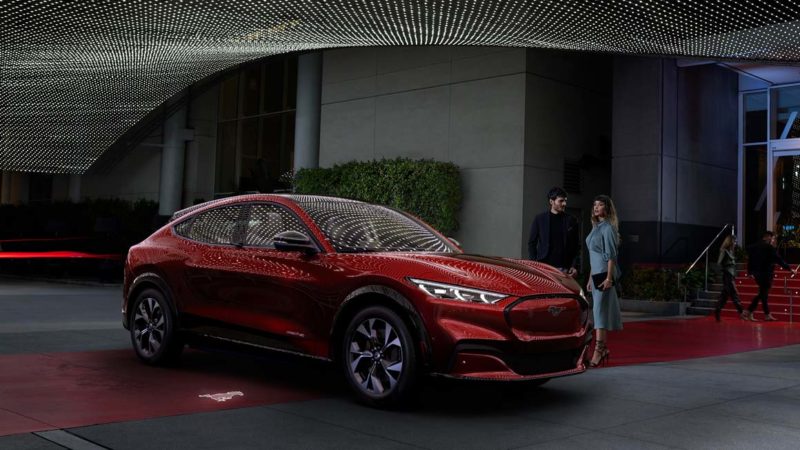American auto giant Ford will sell only all-electric cars in Europe from 2030 with a transition period from mid-2026 which will see only pure electric and plug-in hybrid vehicles on sale – and no non-pluggable hybrids that are favoured by Australia’s federal government.
The pledge, which forms part of a $US22 billion ($A28 billion) commitment to electrification over the next five years, will see it inject $US1 billion ($A1.3 billion) into a new electric vehicle manufacturing facility in Cologne, France at which it intends to start making EVs by 2023.
As with many carmakers, 2020 was a challenging year for Ford. After a difficult year, it reported a return to profit in the fourth quarter of 2020, and also the decision to double down on electrification.
Spearheading its push into electrification are models like the Mach-E, in which Ford has taken pains to ensure it does not alienate its muscle-car-loving audience, and an electric version of its F-150 ute (or pickup).
The new announcement does not make clear which electric models Ford will introduce in Europe, but it does include a goal to sell a “zero-emissions capable” (that is, all-electric or plug-in hybrid) version of every commercial vehicle on offer by 2024, which would account for two-thirds of sales by 2030.
In addition to the above-mentioned plans, Ford will also delve further into its Volkswagen alliance via the Ford Otosan joint venture. In 2020 the Turkey-based venture began building an electric vehicle battery factory that will complement its plug-in hybrid Ford Custom and all-electric e-Transit van assembly lines in that country.
While the pledge to transition in Europe is commendable, it must be noted that as with other carmakers the decision to go all-electric in Europe is very much a prudent one as it seeks to avoid paying fines to the EU if they do not meet strict vehicle emissions regulations that stipulate a fleet average limit of 95 gram CO2 emitted per kilometre.
Commentators also point out that Ford’s European sales are just a fraction of its sales globally, in particular in the US.
While Ford sold more than a million vehicles in 2017 in Europe, this dropped to a mere 654,000 in 2020 according to Statista as the pandemic took its toll.
By contrast, Ford sold 2 billion vehicles in the US in 2020, and EPA data shows the carmaker’s US-based emissions increased between 2014-2019 even with modest reductions in fuel economy.
Nice to see Ford commit to a 100% EV passenger fleet in Europe
BUT it sells far more cars/trucks in the US, with some of the worst CO2/mile of any oem👇
It even managed to do WORSE from 2014–>2019
So how about the same commitment in 🇺🇸 and 🌏???https://t.co/ziXdh4EYC9 pic.twitter.com/OuRzV5Kf3r
— Not_an_Analyst (@facts_tesla) February 17, 2021
In Australia, where Ford comes in number four in auto sales, it sold 60,000 vehicles in 2020, and we can’t count on seeing all-electric Ford models like the Mach-E here any time soon: first, Ford Australia has previously told The Driven it will focus on its new combustion engine line-up that will, by the end of 2021, include a plug-in hybrid Escape.

Bridie Schmidt is associate editor for The Driven, sister site of Renew Economy. She has been writing about electric vehicles since 2018, and has a keen interest in the role that zero-emissions transport has to play in sustainability. She has participated in podcasts such as Download This Show with Marc Fennell and Shirtloads of Science with Karl Kruszelnicki and is co-organiser of the Northern Rivers Electric Vehicle Forum. Bridie also owns a Tesla Model Y and has it available for hire on evee.com.au.

